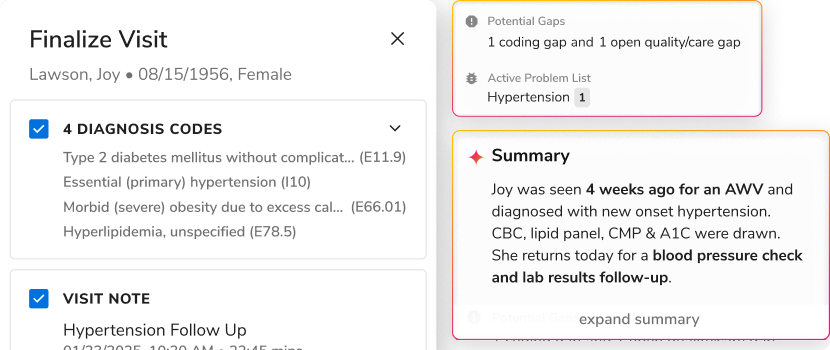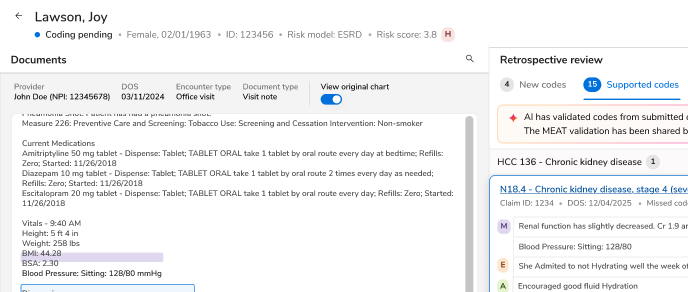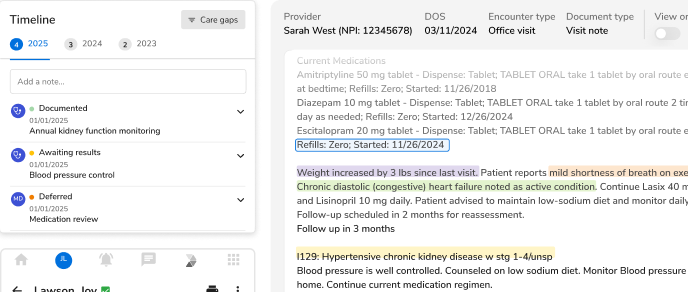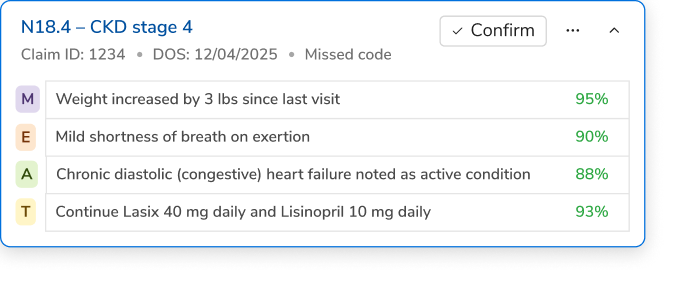The AI Advantage: How to Improve Palliative Care in A Value-based World

Battling with chronic life-limiting illness results in extreme pain, discomfort, and physical as well as mental stress. Even when there is no permanent cure available to treat the disease, palliative care can bring some respite to the patients. It can make a significant difference in enhancing end-of-life care quality by alleviating pain and managing uncomfortable symptoms.
Regardless of the benefits, most people either never receive palliative care or receive it at the very end when their disease has escalated to the last stage. Needless to say, there’s no easy way to discuss end-of-life care, and there’s no easy way for patients and their caregivers to make decisions related to it. What can evolving healthcare do to dissipate this cloud of chaos and discover a more data-driven, intelligent way to help patients enhance the quality of their life?
The state of affairs of palliative care
According to Becker’s Hospital Review, palliative medicine is one of the fastest-growing medical specialties in the US, aiming to improve the quality of life for over 90 million patients in the US. Despite the fact that 90% of hospitals with 300+ beds have a palliative care program, access to care continues to be inadequate.
Nearly one-third of US hospitals do not offer palliative care; even the ones that offer these services do not project any promising outcomes. On average, patients who received palliative care did not survive beyond 38 days, and those who were referred to hospice care died within 20 days.
This is extremely alarming since 75% of the healthcare budget is being spent on treating patients with chronic diseases.
Insufficient palliative care isn’t the only problem here. Rising affluence, as well as developments in medicine and moral obligation, in some cases, result in over care. The patients who are at the brink of collapsing are administered aggressive medication, which may prolong their life for a few days, but it only increases their agony. Not to mention, it also increases the medical bills by thousands of dollars.
Now more than ever, transforming and revamping palliative healthcare has become a pressing issue because of the aging baby boomers. This generation has the largest population, and they are either already over 65 years of age or will be in the next decade. Old age, in most cases, is a precursor to chronic illness, and providers must be prepared to fulfill the palliative healthcare needs of the elderly.
The challenges in extending palliative care
It’s not the quality of care that is primarily at fault, it is the timing. The poor outcomes of palliative care can be attributed to inaccurate scheduling of care. This is particularly a tedious problem because ascertaining how long a terminally ill patient will live is very difficult.
A study suggests that doctors, on average, tend to overestimate the survival term for terminally ill patients by almost 5.3 times. Their predictions are accurate only 20% of the time.
Doctors have all of the resources to make an informed decision, but it is unrealistic to expect them to make an accurate estimate of a patient’s life expectancy. Sometimes they can be correct, but other times, their estimates can widely digress from the actual result.
Consequently, the patients are either assigned palliative consultation before it’s due, or when it is too late.
Deep learning and predictive analytics could be the answer
In this era of a technology-oriented world, there are some essential ways in which palliative care can be improved.
First, applying artificial intelligence for prognosis could yield an increased amount of accuracy in determining the time needed for palliative care. Additionally, it could be instrumental in identifying the right patients. Monitoring tools along with insights based on real-time and predictive analytics can give providers an accurate description of a patient’s current health, and empower patients and their caregivers with objective data to help them make end-of-life care decisions.
Additionally, implementing a deep learning algorithm on the EHR database can estimate the life expectancy of patients. This machine learning technique can filter the data, and its neural networks can predict how long terminally ill patients are expected to live and who all should be assigned to palliative care.
Similarly, it could be leveraged to help patients receive an appropriate level of care, allowing earlier discharges and reducing their overall length of stay. Helping to ensure a patient’s care is managed and their pain is minimized, is also a substantial way of increasing patient satisfaction.
Moreover, artificial intelligence can help eliminate subjective factors such as the doctor’s personal experience and relationship with the patient and fetches results based on the patient population data. It makes the process more objective and increasingly accurate.
Predictive model- Friend or foe for physicians?
It is true that making a prognosis through machine learning will no longer require physicians to manually estimate patient outcomes of the terminally ill. However, it’s important to realize that predictive analytics is not set to replace physicians, but it will provide assistance in determining if a patient needs palliative care.
Physicians can cut back on the time and effort that went to ascertaining the probable patient outcome and focus more on how they can treat them and ensure a better quality of life for their patients. They can offer palliative consultation that prolongs their patients’ lives and at the same time, make sure their end-of-life care experience is as comfortable as it can be.
Diffusing the mental and financial agony of the patient’s family
Family members of a terminally ill patient deal with a lot of uncertainty regarding the cost of the treatment. Even those with insurance have to worry about out of pocket expenses, especially now that the percentage of deductibles is constantly rising.
With the AI determined estimates, they can prepare for the patient’s end-of-life costs and treatments in advance and honor their dying wishes. 80% of Americans wish to spend their last days in their homes, but studies reveal that 60% of people actually die in acute care hospitals.
The road ahead: Future of palliative care with AI-assisted prognosis
Among the 8% of hospital admits who need palliative care, only half of them receive this type of care. The scope for improvement is massive!
The key to filling this cavity is addressing the right question. The current priority is not ‘how’, but it is ‘when’ to extend palliative care. In the quest to improve accurate estimates of life expectancy of the terminally ill, leveraging the power of machine learning will be instrumental. With the availability of artificial intelligence, more patients can have greater access to the care they need. It’s all about being able to help patients and making sure that the decisions in their final days are aligned with maximizing the quality of care. It’s about adding life to days!
To know more how a data activation platform can help you in enhancing palliative care, get a demo
For more updates, subscribe.
Join the webinar by David Nash MD, MBA, Founding Dean Emeritus at Jefferson College of Population Health and Andrew Renda MD, MPH, Associate Vice President of Population Health at Humana Health on 6th August 2019 on “Humanizing Care: Doctors & Payers Drive Value With the SDOH” at 10AM PT/ 12 Noon CT/ 1PM ET.Click here to register.

.png)





.png)









.svg)
.svg)

.svg)

